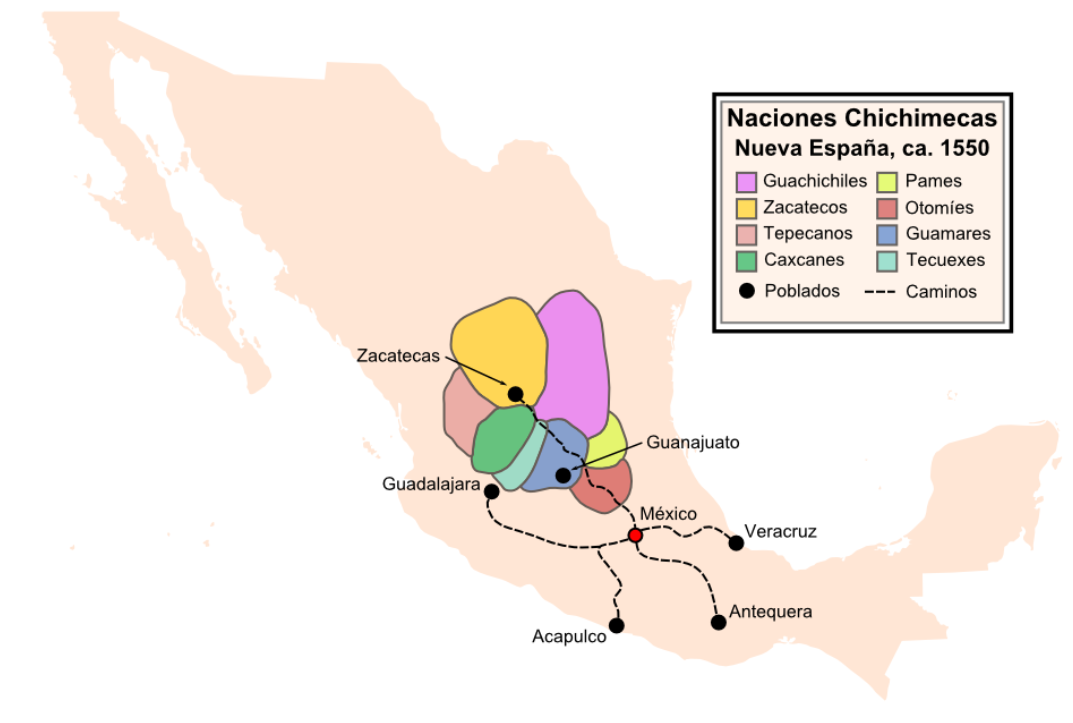Zacatec on:
[Wikipedia]
[Google]
[Amazon]

 The Zacatecos (or Zacatecas) is the name of an indigenous group, one of the peoples called Chichimecas by the
The Zacatecos (or Zacatecas) is the name of an indigenous group, one of the peoples called Chichimecas by the

 The Zacatecos (or Zacatecas) is the name of an indigenous group, one of the peoples called Chichimecas by the
The Zacatecos (or Zacatecas) is the name of an indigenous group, one of the peoples called Chichimecas by the Aztecs
The Aztecs () were a Mesoamerican culture that flourished in central Mexico in the post-classic period from 1300 to 1521. The Aztec people included different Indigenous peoples of Mexico, ethnic groups of central Mexico, particularly those g ...
. They lived in most of what is now the state of Zacatecas and the northeastern part of Durango
Durango (), officially named Estado Libre y Soberano de Durango ( en, Free and Sovereign State of Durango; Tepehuán: ''Korian''; Nahuatl: ''Tepēhuahcān''), is one of the 31 states which make up the 32 Federal Entities of Mexico, situated in ...
. They have many direct descendants, but most of their culture and traditions have disappeared with time. Large concentrations of modern-day descendants may reside in Zacatecas and Durango, as well as other large cities of Mexico.
Name
"Zacateco" is a Mexican Spanish derivation from the originalNahuatl
Nahuatl (; ), Aztec, or Mexicano is a language or, by some definitions, a group of languages of the Uto-Aztecan language family. Varieties of Nahuatl are spoken by about Nahua peoples, most of whom live mainly in Central Mexico and have smaller ...
''Zacatecatl'', pluralized in early Mexican Spanish as ''Zacatecas'', the name given to the state and city. The name was given by the Aztecs to the people inhabiting a region in which a grass they called the ''zacatl'' was abundant. The region was thus called ''Zacatlan'' by the Aztecs. (Mexica
The Mexica (Nahuatl: , ;''Nahuatl Dictionary.'' (1990). Wired Humanities Project. University of Oregon. Retrieved August 29, 2012, frolink/ref> singular ) were a Nahuatl-speaking indigenous people of the Valley of Mexico who were the rulers of ...
)
History
The Zacateco united militarily with other Chichimeca nations to form the Chichimeca Confederation to defeat theSpaniards
Spaniards, or Spanish people, are a Romance peoples, Romance ethnic group native to Spain. Within Spain, there are a number of National and regional identity in Spain, national and regional ethnic identities that reflect the country's complex Hist ...
during the Chichimeca War (1550-90). See Chichimeca War.
The Chichimeca War
Geography
To the east and north they overlapped lands with the Guachichiles. They extended to border the Tepehuanes to the west near Durango. To the north their land bordered that of the Irritilas or Laguna tribes, up to were Cuencamé andParras
Parras de la Fuente () is a city located in the southern part of the Mexican state of Coahuila. The city serves as the municipal seat of the surrounding Parras Municipality, which has an area of 9,271.7 km2 (3,579.8 sq mi).
At t ...
are located. Their principal population centers were in Malpaís, around Peñón Blanco, and around the Cerro de la Bufa
Bufa Hill or El Cerro de la Bufa is a hill found east of historic downtown Zacatecas City, Zacatecas, Mexico, of historic and cultural significance in the Zacatecas state.
Name
The origin of Bufa Hill's name is disputed. What is, perhaps, the b ...
. They also extended down to what is now Los Altos Jalisco and overlapped territory with the Caxcanes.
Culture
Way of Life
Most Zacatecos were nomadic, although a few groups were essentially sedentary. Both men and women wore their hair down to their waist. Some Chichimeca tribes wore their head braided, but it is unspecified if any Zacatec tribes did so. They used body paint and tattoos to distinguish themselves from other tribes. Zacatecos were known to wear skin coverings below their knees and skin headbands on their foreheads. Occasionally they wore leather-soled sandals. They were "graceful, strong, robust and beardless".Juan Bautista de Pomar Juan Bautista (de) Pomar (c. 1535 – after 1601) was a mestizo descendant of the rulers of prehispanic Texcoco, a historian and writer on prehispanic Aztec
The Aztecs () were a Mesoamerican culture that flourished in central Mexico in ...
commented, "In the opinion of men experienced in foreign lands, the Zacatecos are the best archers in the world."
Religion
The Zacatecos were a nomadic tribe and others were sedentary which means they lived in one area. Some tribes did in fact have temples dedicated to some kind of worship in the southwestern part of the state of Zacatecas. In a town called El Teul Gonzalez De Ortega there is a hill called el cerro del sombrero upon this hill there are temples ball courts and also ancient channels where the tribe extracted fresh water from the hill.Conclusion
The Zacatecos as a culture have vanished or faded, due to assimilation and mestizaje of the Mexican people. However many of their direct descendants still live in large concentrations in central Mexico. Taking all this into account, it is extremely difficult to even approximate the population of their descendants. It is equally hard to elaborate on their culture, language, art, and traditions.References
*Powell, Philip Wayne. ''Soldiers, Indians, & Silver: The Northward Advance of New Spain, 1550-1600''. Berkeley, California: University of California Press, 1969. {{DEFAULTSORT:Zacateco Indigenous peoples of Aridoamerica Indigenous peoples in Mexico Durango Zacatecas